College papers can feel like climbing Mount Everest—daunting, exhausting, and seemingly never-ending. You stare at a blank page, a knot forming in your stomach, wondering how you’ll ever string together enough coherent thoughts to meet that looming deadline. It’s a familiar struggle. More than 70% of college students report experiencing moderate to high levels of stress related to academic assignments, according to the American College Health Association. But you don’t have to let the research paper beast devour you.
Crafting a well-organized research paper isn’t just about fulfilling an assignment; it’s about honing critical thinking skills, mastering effective communication, and developing a deep understanding of your subject matter. And guess what? It’s totally achievable.
This guide offers practical, actionable advice to help you conquer the paper writing process, step by step. We’ll equip you with the tools and knowledge you need to structure your thoughts, conduct thorough research, and present your ideas in a clear, compelling manner. Let’s get started!
Laying the Groundwork: Pre-Writing Strategies for Paper Writing
Before you even think about writing a single sentence, it’s vital to lay the groundwork. This pre-writing phase sets the stage for a smoother, more focused writing process.
Understanding the Assignment
First, dissect the assignment prompt like a seasoned detective. What are the explicit requirements? What are the implicit expectations? Highlight keywords like “analyze,” “compare,” “contrast,” or “evaluate.” These verbs signal the specific tasks you need to perform. For instance, if the prompt asks you to “analyze the impact of social media on political discourse,” you know you need to do more than just describe social media and political discourse. You need to break down the complex relationship between the two and explore their effects on each other.
Pay close attention to the grading rubric. This outlines the criteria your professor will use to assess your work. It’s essentially a roadmap to earning a good grade. Is emphasis placed on research quality, argumentation, or writing style? Tailor your efforts accordingly.
If anything is unclear, don’t hesitate to ask your professor for clarification. It’s much better to seek guidance upfront than to make assumptions that could lead you down the wrong path. Remember, no question is too silly if it helps you understand the assignment better.
Choosing a Topic That Sparks Your Interest
Choosing a topic that genuinely interests you can make the entire paper writing process more enjoyable and engaging. When you’re passionate about the subject matter, you’re more likely to invest the time and effort required to produce a high-quality paper.
Think about your personal interests, hobbies, and experiences. Are there any topics that consistently capture your attention? Consider current events, debates, or controversies that resonate with you. For example, if you’re fascinated by technology, you might explore the ethical implications of artificial intelligence or the impact of social media on mental health.
However, it’s also vital to ensure that your chosen topic is manageable within the scope of the assignment. Avoid overly broad topics that would require you to cover vast amounts of information. Narrow down your focus to a specific aspect or angle that you can explore in detail. For instance, instead of writing about “climate change,” you could focus on “the impact of deforestation on biodiversity in the Amazon rainforest.”
Preliminary Research and Brainstorming
Before committing to a topic, conduct some preliminary research to assess the availability of resources and the feasibility of your project. Are there enough scholarly articles, books, and other credible sources to support your arguments? Are there any significant gaps in the existing literature that you can address?
Use library databases, search engines, and online repositories to explore potential sources. Skim abstracts, introductions, and conclusions to get a sense of the content and relevance of each source. Create a bibliography of promising resources that you can consult later.
Brainstorming is another valuable pre-writing technique. It allows you to generate ideas, explore different perspectives, and identify potential arguments. Use techniques like freewriting, mind mapping, or listing to explore your topic from various angles. Don’t censor yourself during this phase; just let your thoughts flow freely.
Crafting a Compelling Thesis Statement
The thesis statement is the heart and soul of your research paper. It’s a concise, declarative sentence that summarizes your main argument and provides a roadmap for your paper. A strong thesis statement is vital for guiding your research, organizing your thoughts, and presenting a clear, compelling argument to your readers.
What Makes a Strong Thesis Statement?
A strong thesis statement should possess the following qualities:
- Specificity: It should focus on a narrow, well-defined topic.
- Arguability: It should present a claim that can be debated or challenged.
- Clarity: It should be easy to understand and free of jargon.
- Originality: It should offer a fresh perspective or insight on the topic.
Avoid vague, general statements that lack substance or fail to take a clear position. For example, “Social media is important” is a weak thesis statement because it’s too broad, obvious, and lacks a specific argument.
Developing a Working Thesis Statement
The thesis statement is not set in stone. It can evolve and change as you conduct your research and refine your thinking. Start with a working thesis statement that reflects your initial understanding of the topic. As you delve deeper into the research, you may need to revise your thesis statement to reflect your new insights and discoveries.
Consider this example. Initially, you might think: “Video games cause violence.” But after some research, you might find that the correlation is complex and mediated by various factors. Then, you might revise your thesis to read, “While there is no direct causal link between violent video games and aggression, excessive exposure can exacerbate pre-existing tendencies toward violent behavior in adolescents with certain psychological vulnerabilities.”
Testing and Refining Your Thesis Statement
Once you have a working thesis statement, test it against the evidence you’ve gathered. Does the evidence support your claim? Are there any counterarguments or contradictory findings that you need to address?
Refine your thesis statement based on your findings. Make it more specific, nuanced, and persuasive. Ensure that it accurately reflects the scope and focus of your paper.
A well-crafted thesis statement will serve as a compass, guiding you through the research and writing process. It will help you stay focused, avoid digressions, and present a coherent, compelling argument.
Structuring Your Paper for Maximum Impact
A well-structured paper is easier to read, understand, and appreciate. A clear, logical structure helps your readers follow your line of reasoning and grasp the key points of your argument.
Crafting an Outline
An outline is a blueprint for your paper. It provides a framework for organizing your thoughts, structuring your arguments, and sequencing your ideas.
Start by identifying the main sections of your paper: introduction, body paragraphs, and conclusion. Then, break down each section into smaller subsections or points. Use headings and subheadings to create a hierarchical structure that reflects the logical flow of your argument.
Consider this example outline for a paper on the impact of globalization on cultural diversity:
-
Introduction
- Hook: Start with an anecdote about cultural exchange.
- Background: Briefly define globalization and cultural diversity.
- Thesis statement: Globalization has both positive and negative impacts on cultural diversity, leading to homogenization in some areas and hybridization in others.
-
Body Paragraph 1: Positive Impacts of Globalization
-
Topic sentence: Globalization facilitates cultural exchange and understanding.
- Supporting evidence: Examples of cross-cultural collaborations in music, art, and film.
- Analysis: Discuss how these collaborations promote tolerance and appreciation of different cultures.
-
Body Paragraph 2: Negative Impacts of Globalization
-
Topic sentence: Globalization can lead to cultural homogenization and the erosion of local traditions.
- Supporting evidence: Examples of the dominance of Western brands and media in global markets.
- Analysis: Discuss how this dominance can lead to the loss of unique cultural identities.
-
Body Paragraph 3: Cultural Hybridization as a Response to Globalization
-
Topic sentence: Cultural hybridization is a process in which different cultures blend and merge, creating new forms of cultural expression.
- Supporting evidence: Examples of hybrid cuisines, music genres, and fashion trends.
- Analysis: Discuss how hybridization can be a way to preserve cultural diversity in the face of globalization.
-
Conclusion
-
Restate thesis statement in new words.
- Summarize the main points of the paper.
- Offer a final thought or call to action.
Introduction: Setting the Stage
The introduction is your opportunity to grab your readers’ attention and set the stage for your paper. It should accomplish the following goals:
- Hook the reader: Start with an engaging anecdote, statistic, or question that piques the reader’s curiosity.
- Provide background information: Briefly introduce the topic and provide relevant context.
- State your thesis statement: Clearly articulate your main argument.
Avoid overly broad or generic statements that fail to capture the reader’s attention.
Body Paragraphs: Developing Your Arguments
The body paragraphs are the heart of your paper, where you develop your arguments and provide evidence to support your thesis statement. Each body paragraph should focus on a specific aspect or point related to your thesis.
- Start with a topic sentence: Clearly state the main idea of the paragraph.
- Provide supporting evidence: Use credible sources, data, examples, and anecdotes to support your claims.
- Analyze the evidence: Explain how the evidence supports your argument and connects to your thesis statement.
- Use transitions: Smoothly connect the ideas from one paragraph to the next.
Remember, each piece of evidence should advance your argument and clarify your position.
Conclusion: Bringing It All Together
The conclusion is your opportunity to summarize your main points, restate your thesis statement, and leave your readers with a lasting impression.
- Restate your thesis statement in new words.
- Summarize the main points of your paper.
- Offer a final thought or call to action that encourages further reflection or action.
Avoid introducing new information or arguments in the conclusion. Your conclusion should be a synthesis of what you’ve already presented.
Research Strategies: Finding Credible Sources
Credible sources are the backbone of any strong research paper. They provide the evidence, data, and expertise you need to support your arguments and persuade your readers.
Identifying Credible Sources
Not all sources are created equal. When conducting research, it’s vital to distinguish between credible and unreliable sources.
- Scholarly articles: Peer-reviewed articles published in academic journals are generally considered the gold standard of research. They undergo a rigorous review process to ensure their accuracy, validity, and originality.
- Books: Books written by experts in the field can provide in-depth coverage of a topic. Look for books published by reputable academic presses or publishers.
- Government documents: Reports, statistics, and other documents published by government agencies can be valuable sources of information.
- Reputable news organizations: News articles from established news organizations like The New York Times, The Wall Street Journal, and the BBC can provide timely and accurate coverage of current events.
Avoid sources that are biased, sensationalized, or lack evidence-based support. Be wary of websites with anonymous authors, questionable credentials, or a clear agenda.
Using Library Databases
Library databases are powerful tools for finding credible sources. They provide access to a vast collection of scholarly articles, books, and other resources.
Familiarize yourself with the library databases available at your institution. Common databases include JSTOR, ProQuest, EBSCOhost, and Google Scholar.
Use keywords and search filters to narrow down your search results. Pay attention to the publication date, author credentials, and abstract of each source.
Evaluating Sources for Bias and Reliability
Even if a source appears to be credible, it’s still important to evaluate it for bias and reliability. Consider the following questions:
- Who is the author? What are their credentials and expertise? Do they have any known biases or affiliations?
- What is the purpose of the source? Is it to inform, persuade, or entertain? Does it have a clear agenda or point of view?
- Is the information accurate and up-to-date? Can you verify the information with other sources?
- Is the source peer-reviewed? Has it been subjected to scrutiny by other experts in the field?
By carefully evaluating your sources, you can ensure that you’re using reliable and trustworthy information to support your arguments.
Writing with Clarity and Precision
Clear, precise writing is essential for effective communication. It allows your readers to easily understand your ideas, follow your line of reasoning, and appreciate the strength of your arguments.
Using Clear and Concise Language
Avoid jargon, clichés, and overly complex sentence structures. Use simple, direct language that conveys your meaning clearly and concisely.
- Choose active voice over passive voice whenever possible. Active voice makes your writing more direct and engaging.
- Use strong verbs that convey action and energy. Avoid weak verbs like “to be” or “to have.”
- Vary your sentence structure to keep your writing interesting and engaging.
- Break up long paragraphs into shorter, more digestible chunks.
Citing Sources Properly
Proper citation is essential for academic integrity. It gives credit to the original authors of the ideas and information you use in your paper. It also allows your readers to verify your sources and explore the topic further.
Familiarize yourself with the citation style required by your professor (e.g., MLA, APA, Chicago). Follow the guidelines carefully and consistently.
- Use in-text citations to indicate the sources of your information.
- Create a bibliography or works cited page that lists all the sources you consulted.
- Use citation management software like Zotero or Mendeley to help you organize your sources and generate citations automatically.
Proofreading and Editing
Proofreading and editing are crucial steps in the writing process. They allow you to catch errors, refine your language, and improve the overall quality of your paper.
- Read your paper aloud to identify awkward phrasing, grammatical errors, and spelling mistakes.
- Ask a friend or classmate to read your paper and provide feedback.
- Use grammar and spell-checking software to identify potential errors.
- Revise your paper multiple times to refine your arguments, improve your organization, and strengthen your writing.
Overcoming Writer’s Block and Staying Motivated
Writer’s block is a common challenge for college students. It can be frustrating and demoralizing, but it’s important to remember that it’s a temporary condition.
Breaking Down the Task into Smaller Steps
Large, complex tasks can feel overwhelming. Break down your paper into smaller, more manageable steps. Focus on completing one step at a time, rather than trying to tackle the entire project at once.
- Set realistic goals for each writing session.
- Reward yourself for completing each step.
- Take breaks to avoid burnout and fatigue.
Finding a Writing Routine That Works for You
Experiment with different writing environments, times of day, and techniques to find a routine that works best for you.
- Find a quiet, distraction-free workspace where you can focus on your writing.
- Set aside specific times for writing each day or week.
- Use techniques like freewriting or timed writing to overcome writer’s block and generate ideas.
Seeking Support from Others
Don’t be afraid to ask for help from your professor, classmates, or the writing center at your institution.
- Attend office hours to ask your professor questions and get feedback on your paper.
- Form a study group with classmates to discuss ideas, share resources, and provide mutual support.
- Visit the writing center to get personalized feedback from trained writing tutors.
The Finish Line: Final Touches and Submission
You’ve poured your heart and soul into your research paper. Now, it’s time to put the final touches on your work and prepare it for submission.
Double-Checking Requirements
Before submitting your paper, carefully review the assignment prompt and grading rubric to ensure that you’ve met all the requirements.
- Check the word count, formatting guidelines, and citation style.
- Ensure that you’ve addressed all the key questions or issues outlined in the prompt.
- Proofread your paper one last time to catch any errors or omissions.
Formatting for Clarity and Professionalism
Proper formatting is essential for clarity and professionalism. It makes your paper easier to read and demonstrates that you’ve paid attention to detail.
- Use a clear, readable font like Times New Roman or Arial.
- Set appropriate margins (typically 1 inch on all sides).
- Use double-spacing to improve readability.
- Include page numbers, a header, and a title page as required by your professor.
Submitting with Confidence
Once you’ve completed all the necessary steps, submit your paper with confidence.
- Review your paper one last time before submitting it.
- Submit your paper on time to avoid penalties.
- Keep a copy of your paper for your records.
Elevate Your Skills: Long-Term Strategies for Better Paper Writing
Mastering the art of paper writing is a journey, not a destination. By adopting these long-term strategies, you can continuously improve your skills and become a more effective writer.
Cultivating a Reading Habit
Reading widely and regularly is one of the best ways to improve your writing. It exposes you to different writing styles, vocabulary, and ideas.
- Read books, articles, and essays in a variety of genres and disciplines.
- Pay attention to the way authors use language, structure their arguments, and engage their readers.
- Keep a journal or notebook to record interesting ideas, quotes, and observations.
Practicing Writing Regularly
Writing is a skill that improves with practice. The more you write, the more comfortable and confident you’ll become.
- Write every day, even if it’s just for a few minutes.
- Experiment with different writing styles and genres.
- Seek out opportunities to write for publication or public audiences.
Embracing Feedback as a Growth Opportunity
Feedback is an essential part of the writing process. It allows you to identify areas for improvement and refine your skills.
- Be open to feedback from your professor, classmates, and writing tutors.
- Ask clarifying questions to understand the feedback.
- Use the feedback to revise your paper and improve your writing.
Seeking Out Writing Resources and Support
Take advantage of the writing resources and support services available at your institution.
- Attend workshops on grammar, style, and research.
- Consult with writing tutors for personalized feedback.
- Join a writing group to share your work and get support from other writers.
Embracing the Iterative Process
Writing is an iterative process that involves multiple drafts, revisions, and refinements. Don’t expect to produce a perfect paper on your first attempt.
- Be willing to revise your paper multiple times.
- Don’t be afraid to make mistakes; they’re a part of the learning process.
- Celebrate your progress and acknowledge your accomplishments along the way.
The Should-You-Get-Started Checklist
Tackling a research paper can feel like an uphill battle, but with the right strategies and a proactive approach, you can transform the process from daunting to doable. Remember, a well-organized paper isn’t just about earning a good grade; it’s about developing essential skills that will serve you well in your academic and professional life. So, are you ready to conquer that college paper? Take the first step, embrace the challenge, and watch your writing skills soar.

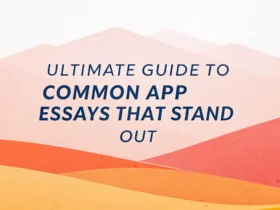



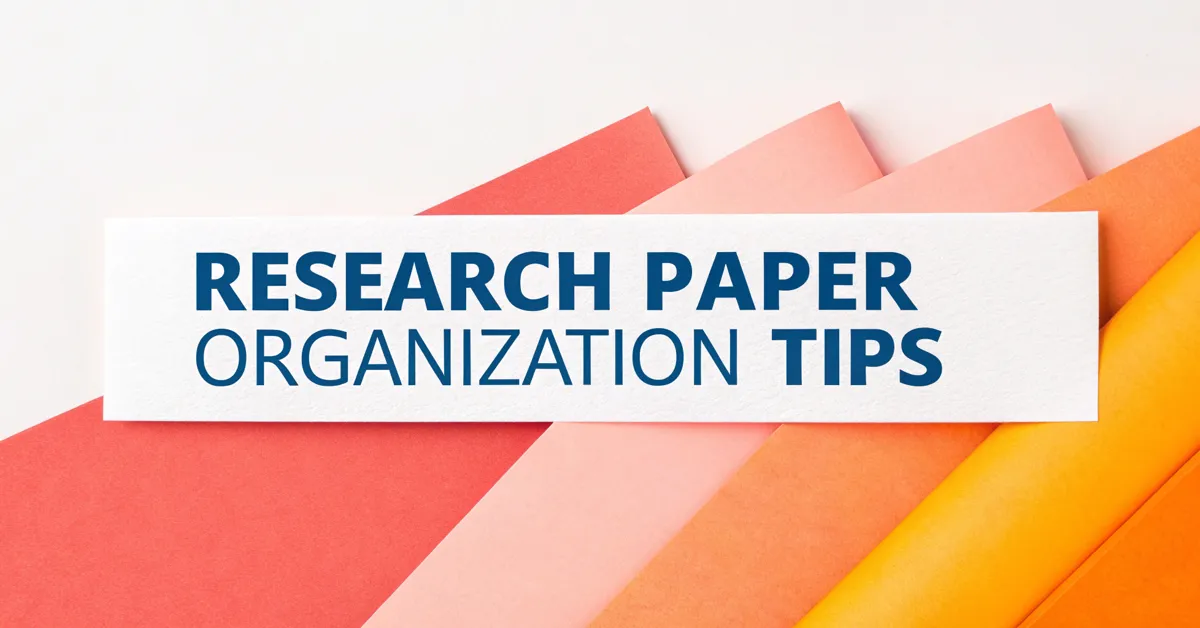





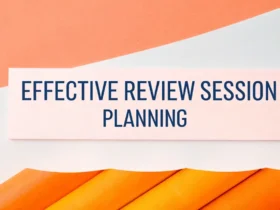
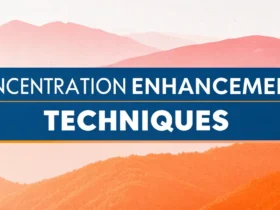
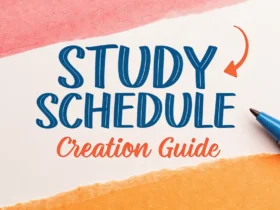
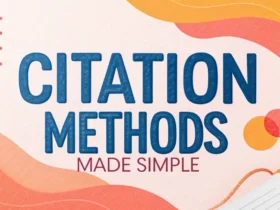
Leave a Reply
View Comments